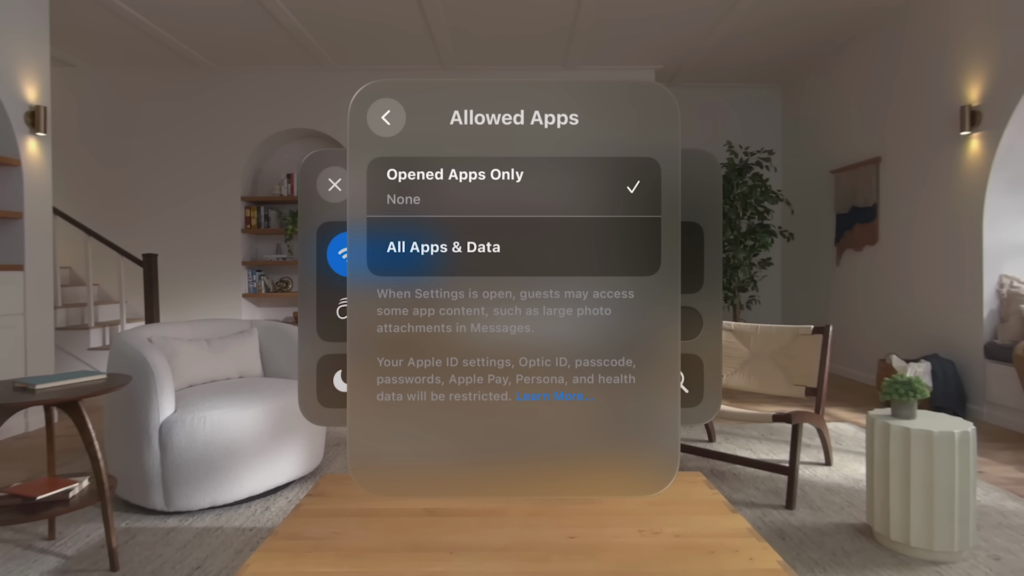The Apple Vision Pro has introduced a groundbreaking way to experience augmented reality, blending the digital and physical worlds seamlessly. However, as with any first-generation technology, there are areas ripe for improvement, particularly when it comes to sharing the device with others. The device’s Guest Mode feature, designed to protect the primary user’s privacy while allowing others to enjoy the headset, presents both promising solutions and notable challenges. Let’s delve into the intricacies of Guest Mode, its current limitations, and the potential for future enhancements.
The Appeal of Guest Mode
One of the standout features of the Apple Vision Pro is its approach to privacy and data protection. Unlike other devices in the Apple ecosystem, such as the iPad, the Vision Pro offers a Guest Mode that aims to safeguard the primary user’s data (photos, messages, documents, app content) while allowing guests to explore the device. This feature is crucial for a device that is as personal and data-intensive as the Vision Pro, ensuring that users can share their device without exposing their private information.

The Shortcomings of Guest Mode
Despite its promise, Guest Mode on the Apple Vision Pro is lacking. The process to activate Guest Mode is more cumbersome than it should be, with timing restrictions and the mode deactivating if the headset is removed, even briefly. This can disrupt the guest’s experience, making it feel limited and fragmented and the owner needs to go through the process again, which is tedious.
Moreover, the effort required to safeguard personal data while in Guest Mode is significant. The current system necessitates that the owner manually selects which apps to allow, a process that can be both time-consuming and cumbersome. Ideally, there would be a simpler way to protect personal data, such as enabling all apps by default that do not contain personal content or introducing a “private mode” for apps, where session data is not retained (similar to Safari private browsing.)
A Vision for the Future
For a premium product like the Apple Vision Pro, the expectation is high for features that enhance user experience and accessibility. Drawing inspiration from macOS, the Vision Pro could greatly benefit from supporting multiple user accounts. This would allow different members of a household to personalize their experiences without compromising privacy or the seamless nature of interaction that Apple products are known for.
The introduction of multi-user support would transform the Vision Pro from a solitary device into a shared technology, enriching the user experience for families and groups. It would democratize access to the device’s capabilities, making it more versatile and appealing to a broader audience.
Looking Ahead
While the first iteration of the Apple Vision Pro has set a new standard for augmented reality experiences, there’s palpable excitement for what future versions will bring. The current limitations of Guest Mode highlight a critical area for development, emphasizing the need for a more intuitive, inclusive, and privacy-conscious approach to device sharing.
As we anticipate the next iterations of the Apple Vision Pro, the hope is for a device that not only continues to push the boundaries of technology but also becomes more accessible and enjoyable for everyone. The potential for the Apple Vision Pro to become a shared device within a household is vast, promising a future where augmented reality becomes a communal, rather than individual, experience.




